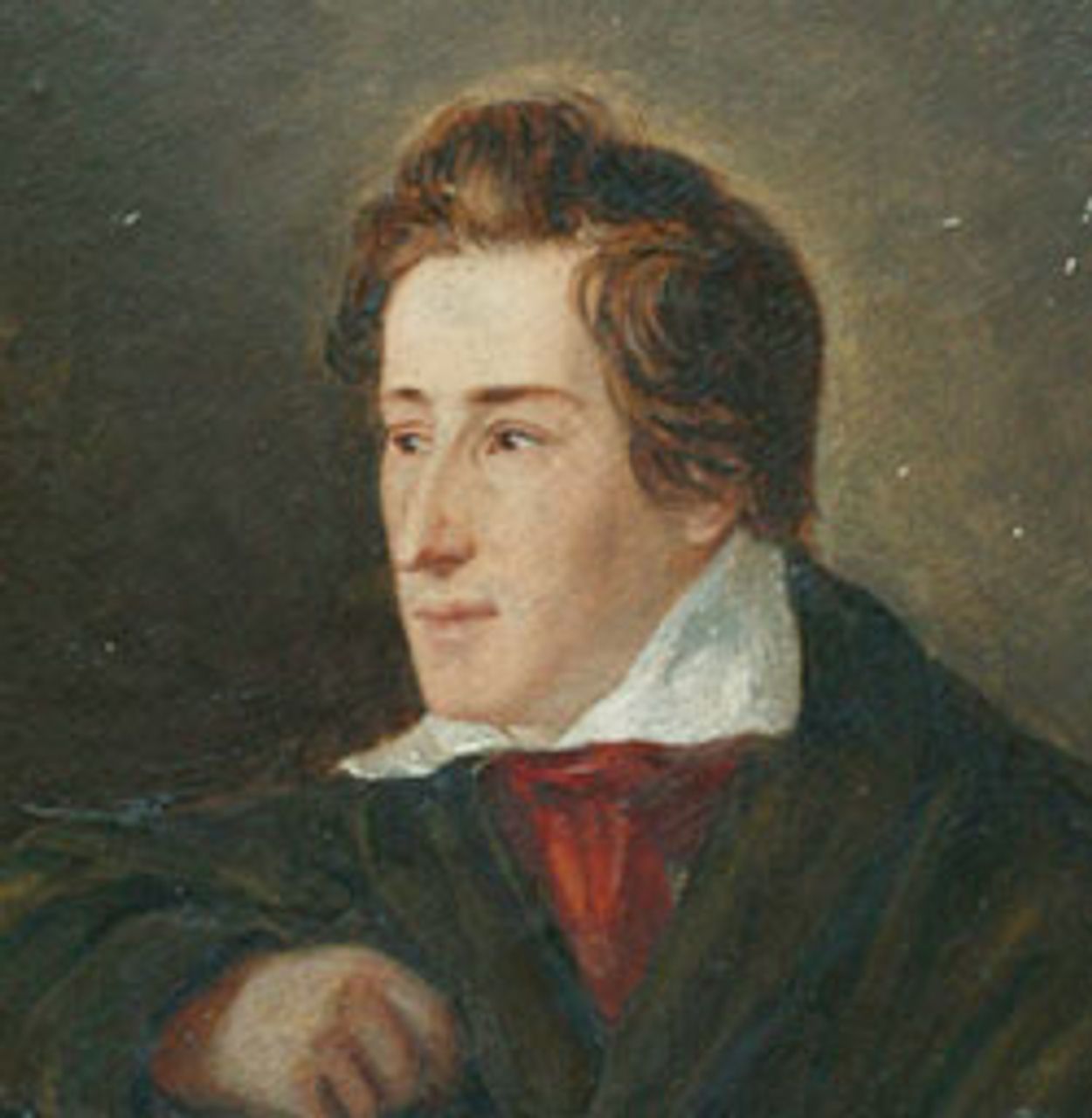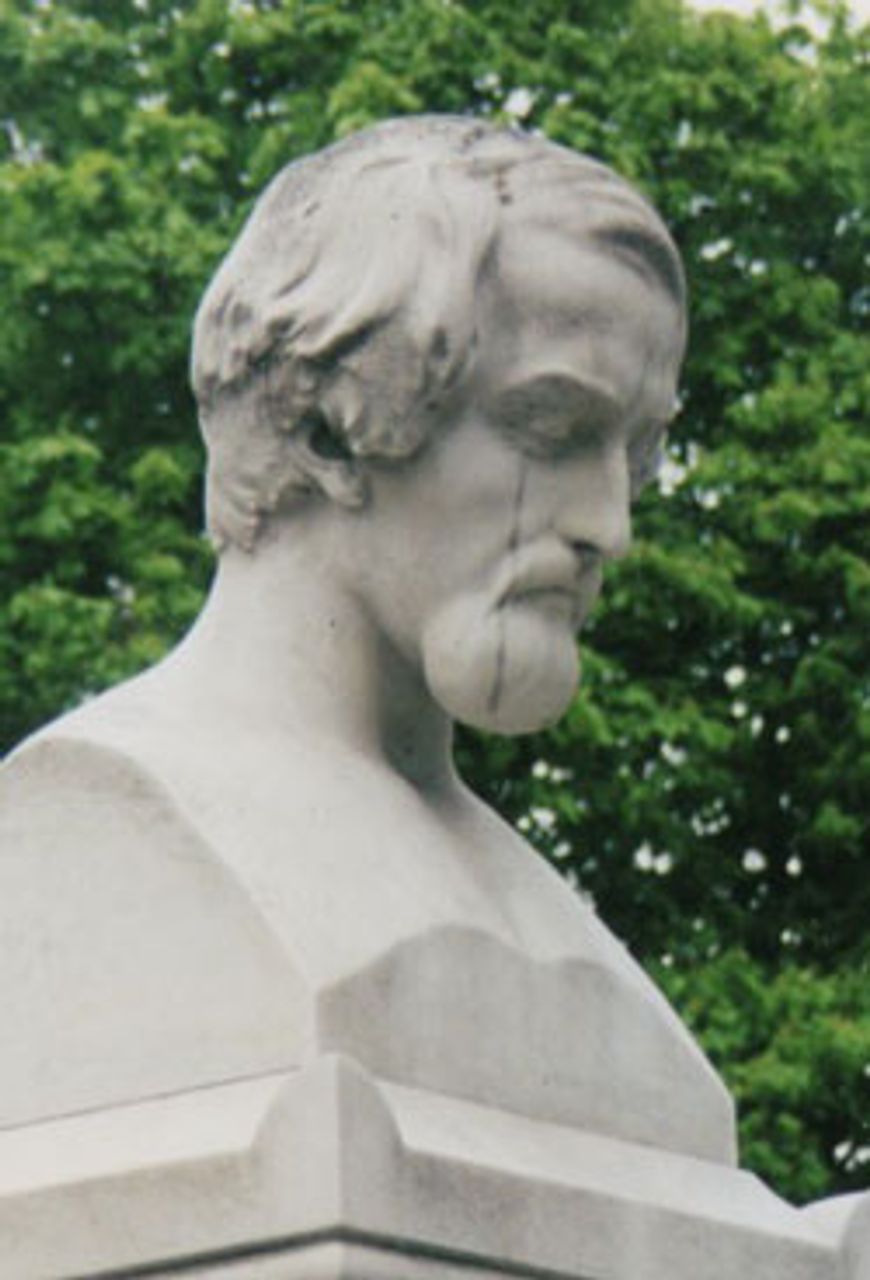 Portrait of Heine by Moritz Daniel Oppenheim
Portrait of Heine by Moritz Daniel OppenheimIn the last week of July, the outstanding German poet and essayist Heinrich Heine was bestowed a very dubious honour. On 28 July, his bust was placed in the Walhalla, the “Teutonic” Hall of Fame, built by the Bavarian King Ludwig I high above the Danube. The hall was to serve as a monument to Germany’s “Teutonic” greatness and featured the busts of Ludwig’s very selective list of German heroes. The hall and its founder had been scathingly ridiculed by Heine (1797 – 1856) during his lifetime.
This is what Heine wrote in his “Hymn to the King of Bavaria”:
Tis Louis of Bavaria,
Few beings are so splendid ;
In him his people revered
The monarch king-descended.
A connoisseur, he bids them portray
The fairest women’s faces,
And then, as eunuch of the arts.
His painted harem paces.
At Ratisbon he bade them build
A Golgotha of marble, a stable,
And for every single head
He personally wrote the label.
The great “Walhalla Brotherhood”—
A master work— each man is
For soul and deeds and service praised,
From Teut to Schinderhannes.
 Bust on Heine’s grave in Paris by Louis
Bust on Heine’s grave in Paris by LouisHasselriis
But it is very doubtful if the bestowing of this honour would have pleased Heine, as the chair of the Düsseldorf Friends of Heinrich Heine, Heinrich Theisen, remarked at the unveiling of the Heine bust in the Walhalla. It is more likely he would have responded with biting sarcasm. When he was alive, there was no harsher critic of the insincere, reactionary display of chauvinism with which many German bourgeois, petty bourgeois, intellectuals and King Ludwig reacted to the disgrace of the French occupation of Germany by the Napoleonic troops.
Heine himself was a great admirer of Napoleon, who, with his Civil Code, disseminated democratic rights into innumerable fragmented principalities of Germany, and less because his troops occupied Germany. Heine’s admiration for France, which granted him asylum, was especially due to the achievements of the French Revolution.
It is not that Heine did not love his homeland and above all the German language; though during his lifetime his poems and writings were censored and banned in many parts of Germany. Until his death, he saw himself primarily as a German poet and wanted to have this put on his tombstone. But he would have absolutely nothing to do with the narrow-minded chauvinism and hatred of the French, which at this time many German patriots combined with their German nationalism. In his eyes Prussian militarism and insistent hero-worship of the German nationalists posed a threat to German language and culture.
The Walhalla, a neo-classical temple designed by Ludwig’s architect Leo von Klenze, served for the nationalists of the 19th and 20th centuries to glorify their national heroes and myths, and counterpose a “German spirit” to the “Celtic spirit” (a synonym for the achievements of the French Revolution). The building is named after Valhalla, the abode of the bravest fallen warriors in Germanic mythology. It is one of the many monuments erected in the 19th century, such as the Herrmannsdenkmal near Detmold, the Völkerschlachtdenkmal in Leipzig and the Deutsche Eck in Koblenz on the Rhine.
King Ludwig was not so particular about the German nationality of his heroes, who included German emperors and kings as well as Flemish painters, Swiss independence fighters, Russian generals, Swedish kings and obscure saints. To a certain extent, he included all German-speaking lands as part of Germany.
Heine, who regarded himself as a cosmopolitan and European, repeatedly targeted these German myths and above all their prophets. In “Germany, a Winter’s Tale”, he satirises Hermann of the Cherusci (“Arminius”) and the battle of the Teutoburg Forest, where he defeated the Roman general Varus:
Here, they fought the Cheruscan prince,
This nobleman, Hermann by name;
In this mud and mire the Germans won,
Here was built the German fame.
In the same work Heine also ridiculed another German icon which features in the Pantheon of King Ludwig, the Holy Roman Emperor Barbarossa:
The republican would scoff at us
If a ghost with sceptre and crown
Marched at the head of our ranks.
There’ll be much laughter in town!
The official speaker at the 28 July event had to go to considerable lengths to justify including Heine’s bust in this place.
“Heine does not need the Walhalla, but the Walhalla needs him”, the president of the Bavarian Academy of Arts, Prof. Dr. Dr. Dieter Borchmeyer told the guests in the Hall of Fame. Borchmeyer acknowledged that this type of honour was now somewhat anachronistic, a view taken by Heine 150 years ago. The life of this person and the bust itself placed a question mark over the monumental claims of this location, said Borchmeyer, but if Heine saw how his memory was being honoured, then he would curtail his mockery.
Borchmeyer based this claim mainly regarding the design of the Heine bust by Bert Gerresheimer. It shows an aging, somewhat desperate-looking Heine gazing at the heavens. Gerresheimer used the poet’s death mask and representations of him from the time of his illness, when he lay bedridden for eight years in his “Matratzengruft” (literally, “mattress grave”).
Like the other Walhalla monuments, the bust is fashioned from pure Lasa marble. At first glance, it does not look out of place among the other “marble skulls”. However, by means of a crack running through the bust, the artist tried to show that all is not well between the poet and his “Teutonic” fatherland.
The crack, it is rumoured, was originally too visible for the Bavarian state government, and so had to be made somewhat more subtle than the artist had actually intended. As Oliver Jungen said in the Frankfurter Allgemeine Zeitung, it is actually more of a “hint of a crack, as could be seen after the unveiling, virtually just a scar”.
At the unveiling of the marble bust of the poet, the Bavarian state premier Horst Seehofer also indicated quite correctly that Heine, who spent most of his life in exile in France, would “not have had much time” for this monument. But thanks to the ingenuity of his speechwriter, Seehofer was able to include a quote from Heinrich Mann, who was also not particularly valued in Germany during his lifetime and was sent into exile: “Although he may not need a public monument, we owe this memorial to ourselves”.
But it is extremely doubtful whether Heinrich Mann envisaged the Walhalla as a suitable place for Heine’s memorial.
Even if the erecting of a bust of Heine, a friend of Karl Marx and someone who scorned reactionary German philistinism, had been well-meant by those responsible, this honour would have more to do with historical misrepresentation than the rehabilitation of someone outlawed in Germany, and badly treated by his country for most of his life.
Germany has always had problems with Heine. When the Austrian Empress Elisabeth, like King Ludwig a member of the Wittelsbach dynasty, wanted to bestow a monument of Heine to his native city of Düsseldorf in honour of the poet’s 100th birthday, it was rejected. Instead, the statue had to undertake the long journey to New York. It stands in the Bronx.
Heine’s image in Germany has been shaped by nationalist and anti-Semitic literary scholars. After the Nazis came to power in 1933, his romantic Lorelei poetry could still be found in textbooks, but was attributed to an “unknown poet”. Heine was ostracised not only during the Nazi period as a Jew and as a political rebel. Even after the war, attempts to integrate this great poet and sharp-tongued critic into the German literary canon were not always successful. It was only eventually in 1989 that Düsseldorf University was renamed in his honour. The financing of a Heine bust also gave rise to disputes in Düsseldorf. The city council refused to contribute, and no official representatives of the city were present at Walhalla on 28 July.
But Heine was popular amongst the rebellious youth of the 1960s, who were apt to cite not only his book of songs but also his political poems and texts. There were large-scale celebrations of the poet in 1997 on his 200th birthday. But even then, politicians and the media tried to appropriate him for their own nationalist purposes. These efforts have now been crowned with the unveiling of his bust in the Walhalla.
Even if a marble Heine must now take its place in the Walhalla, it will not be possible to rob his work of its living, rebellious spirit. This will prove all the more difficult at a time when German nationalism and militarism are once more raising their heads.
There was even a hint of subversion at the official celebrations thanks to the actor Rainer Goernemann. Against the background music for the ceremony, a setting to music of Heine songs, he recited the poem entitled “Wait a While!” which goes as follows:
This will be seen with awful clearness,
When the right moment is at hand;
You’ll hear my voice with stunning nearness,
The word of thunder on command.
The raging storm will surely sunder
Many an oak upon that day;
Each palace to its base shall quiver,
And many a church steeple give way.
